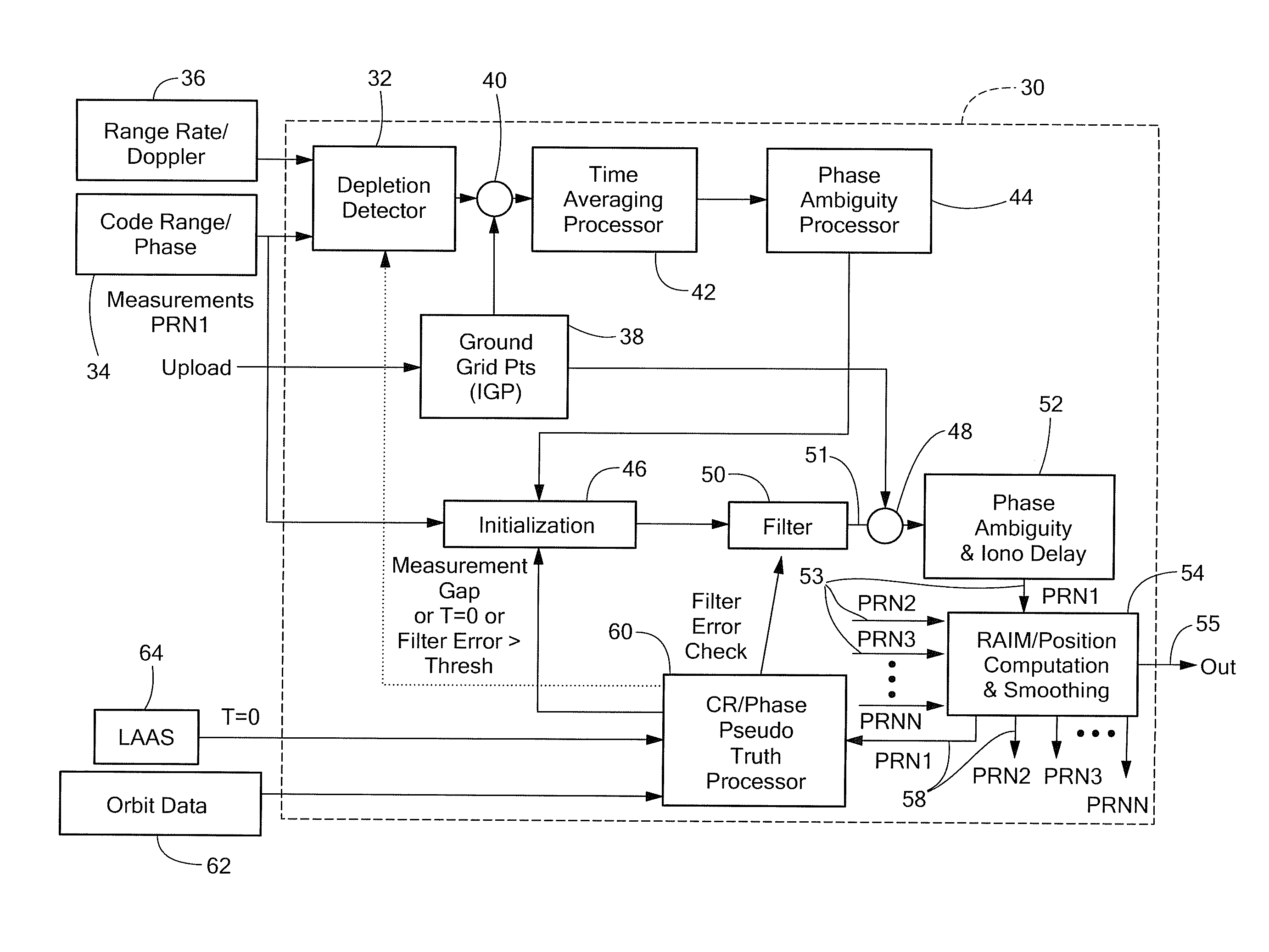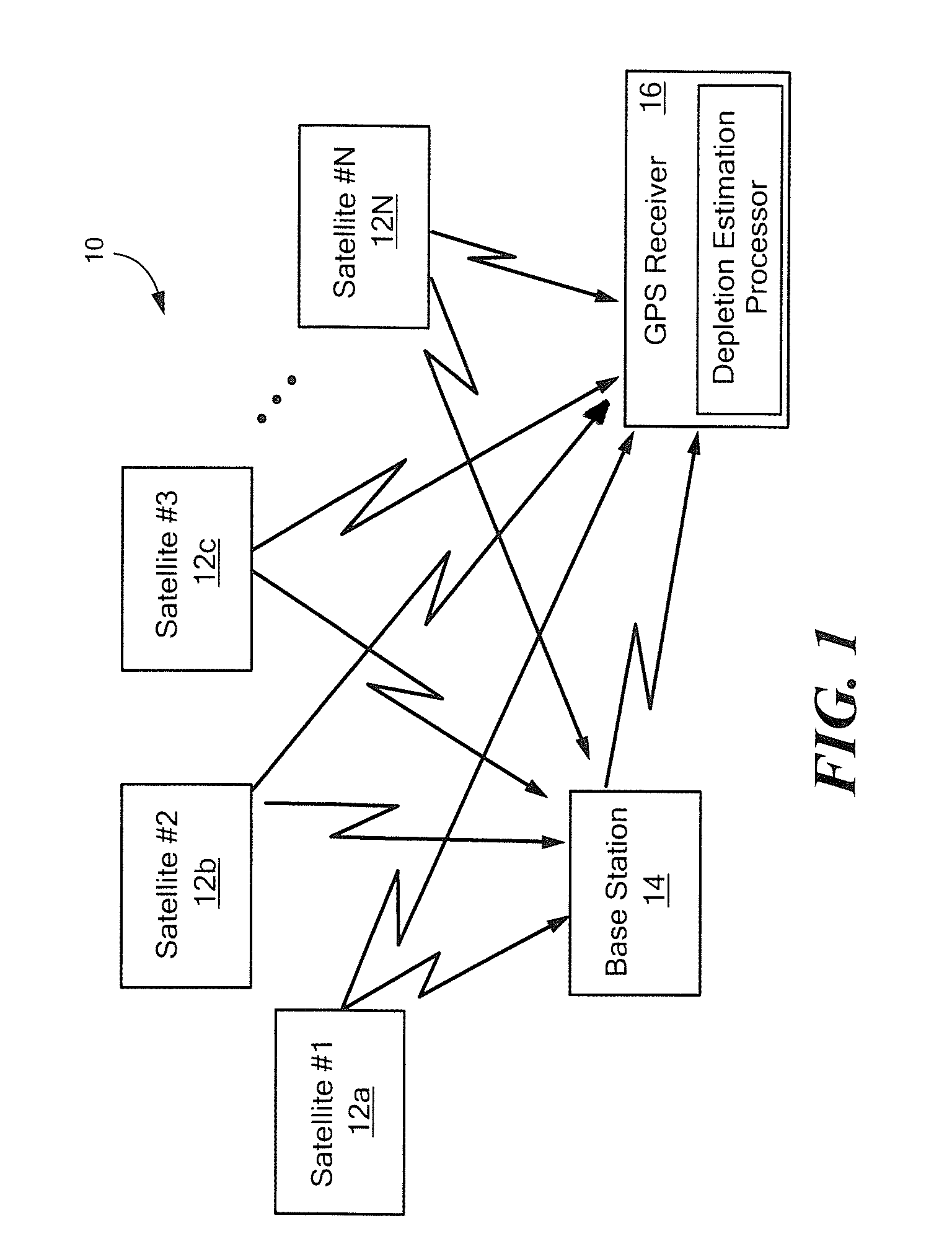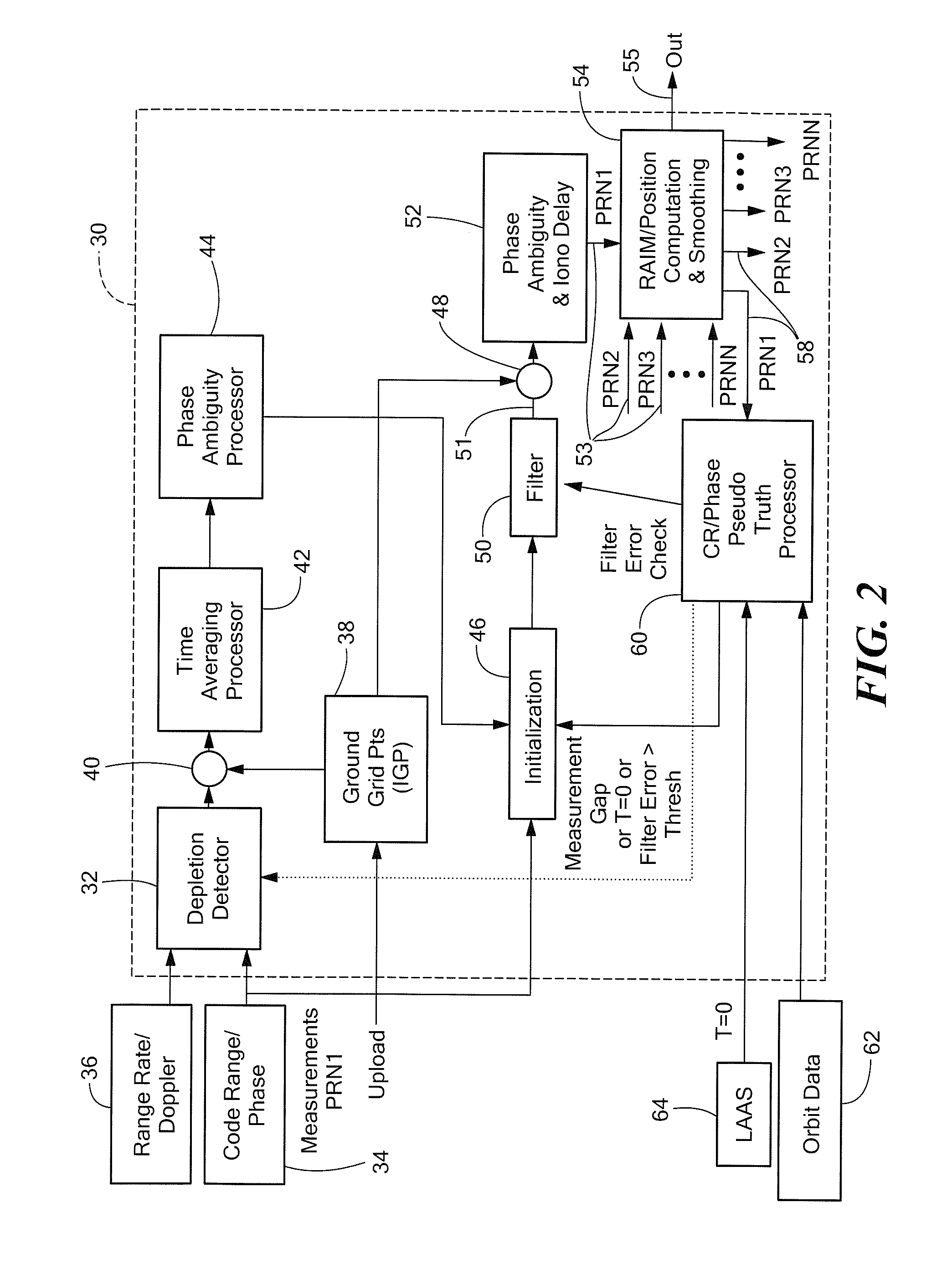Single Frequency User Ionosphere System and Technique
- Summary
- Abstract
- Description
- Claims
- Application Information
AI Technical Summary
Benefits of technology
Problems solved by technology
Method used
Image
Examples
Embodiment Construction
[0023]Described herein are systems and techniques for directly estimating depleted or residual ionosphere delay and using the estimate for navigation in an aircraft. Before describing such systems and related techniques, some introductory concepts and terminology are explained.
[0024]Reference is sometimes made herein to systems and techniques which include filters. It should be appreciated, however, that in some embodiments filters are not required. For example, in one embodiment, a User Ionosphere Vertical Error (UIVE) value is derived from GIVE grid point data interpolation and user measurement error estimation. The UIVE value is then used to select a historically best set of IGDs for phase ambiguity estimation. Thus, in such an embodiment, the UIVE estimate is made and when it is determined that the UIVE estimate is at an acceptable value (or within an acceptable range of values) based upon historic data, that UIVE estimate is used to select the ambiguity estimate and no filter i...
PUM
 Login to View More
Login to View More Abstract
Description
Claims
Application Information
 Login to View More
Login to View More - Generate Ideas
- Intellectual Property
- Life Sciences
- Materials
- Tech Scout
- Unparalleled Data Quality
- Higher Quality Content
- 60% Fewer Hallucinations
Browse by: Latest US Patents, China's latest patents, Technical Efficacy Thesaurus, Application Domain, Technology Topic, Popular Technical Reports.
© 2025 PatSnap. All rights reserved.Legal|Privacy policy|Modern Slavery Act Transparency Statement|Sitemap|About US| Contact US: help@patsnap.com



